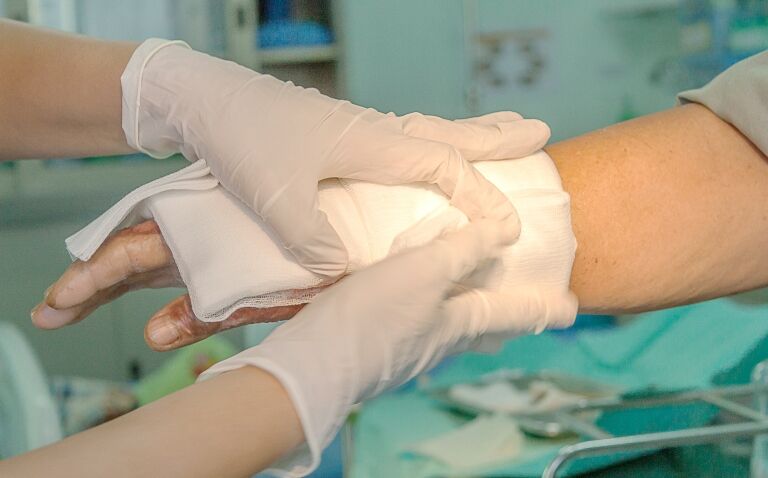A high respiratory SOFA (Sequential Organ Failure Assessment) score combined in a predictive model with the total body surface area burned (TBSA), was the best predictor of mortality risk in patients with severe burns and inhalation injury, according to a study by Chinese researchers.
Patients with severe burns and inhalation injury are at an increased risk of infection, longer hospital stays and death. In fact, the presence of smoke inhalation injury with a cutaneous burn significantly increases morbidity and mortality.
Assessment of burns can be undertaken using the Baux score, which is the summation of the patient’s age and the percentage of total body surface area (%TBSA) burned and is often quoted as the estimated percentage risk of death.
However, a revised Baux score includes inhalation injury and is simple enough for mental calculation.
The respiratory SOFA score is based on the PaO2/FiO2 (PF) ratio and ranges from 0 to 4 points, where higher scores indicate worsening respiratory dysfunction.
The PF ratio has also been shown to be highly correlated with smoke inhalation injury in burned children.
Despite this, to date, there is a lack of data on the value of the respiratory SOFA score in the prognosis of severe burn patients with inhalation injury.
For the present study, the Chinese team speculated that the respiratory SOFA score might be an important prognostic factor in such patients and undertook a retrospective analysis to determine the relevance of the score in the survival of severe burn patients with inhalation injury.
The study included adult burn patients with inhalation injury and where the burn area was greater than 20%. Multivariate Cox’s regression analysis was used to identify significant predictors of death and the sensitivity, specificity, and accuracy of the area under the ROC curve calculated.
Respiratory SOFA and survival analysis
The retrospective analysis included 118 patients with a mean age of 45.9 years (23.7% female) and of whom, 74.6% had experienced a flame burn, with a mean TBSA of 56.4%.
Univariate analysis revealed that both a large-area TBSA and a respiratory SOFA score of 3 – 4, increased the risk of death. In fact, TBSA (Hazard ratio, HR = 2.38, 95% CI 1.49 –3.79, p < 0.001) and the respiratory SOFA score (HR = 3.12, 95% CI 1.90 – 5.19, p < 0.001) were both independently associated with a shorter time to death.
In ROC curve analysis, a model incorporating TBSA and the respiratory SOFA score had an area under the curve, AUC, of 0.96 compared to the revised Baux score model (AUC = 0.93) for prediction of mortality and this difference was non-significant (p = 0.18).
In addition, the TBSA and the respiratory SOFA score model had a sensitivity of 0.95 and a specificity of 0.85.
The authors concluded that combining the TBSA and the respiratory SOFA score, improves the predictive level for patients with inhalation burns.
Citation
Ji Q et al. Survival and analysis of prognostic factors for severe burn patients with inhalation injury: based on the respiratory SOFA score. BMC Emerg Med 2023.










